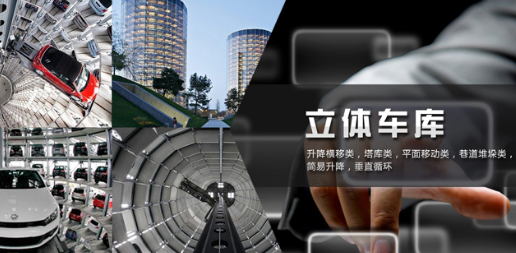
- Home
- Profile of Sampu
- Garage type
- Classic cases
- Manufacturing strength
- News and information
- Contact us
In science fiction movies, we often see scenes where, in the underground parking garage of a skyscraper, with just a light touch of a button, several rows of car-carrying machine racks will appear in front of you, and then your car will come into view. This cool scene used to only appear in science fiction movies, but now it is slowly becoming a reality. The emergence of mechanical parking garages will make this dreamy scene or movie scene shine through into reality.

In the 1960s, with the rapid development of the automotive industry, the number of cars increased sharply. Parking difficulties began to emerge in Europe, the United States, and other places, and multi-level parking garages began to appear. The research content of multi-level parking garages includes machinery, electrical control, hydraulics, and computers. Due to the complexity of multi-level parking garages, the products in various countries have certain differences. Europe, the United States, and other regions with abundant land resources generally use lane-stacking and multi-level lifting and shifting in multi-level parking garages. The scarcity of land resources has led to a large demand for multi-level parking garages in Japan. At present, Japan's multi-level parking garage technology is very mature and in a leading position.
Compared with developed areas abroad, China's development of multi-level parking garages started late. Since the reform and opening up, with the development of the economy and the continuous increase in the number of cars, there has been a large market for mechanical multi-level parking garages. It has gradually developed from the initial "introduction and imitation" to independent research and development, and the types of multi-level parking garages have become more diverse. With the continuous development and improvement of mechanical multi-level parking garages, related products are becoming more and more mature. According to China's mechanical industry standard JB/T8713-1998, multi-level parking garages are divided into the following categories: lifting and shifting type, vertical lifting type, vertical cycling type, horizontal movement type, lane-stacking type, simple lifting type, and horizontal cycling type.
The vehicle access work of the mechanical parking garage is completed by the motor running the car-carrying plate for lifting or transverse movement. According to the characteristics of the site, a suitable parking solution can be selected through reasonable planning and design to increase the number of parking spaces by several times. This characteristic of the mechanical structure of the multi-level parking garage can effectively utilize space. The same site can accommodate many times more vehicles than a regular open-air parking lot, thereby increasing space utilization, reducing road resource occupation, lowering unit land use costs, and alleviating urban parking pressure. Multi-level parking garages save 50% to 80% of space compared to regular parking lots, which is particularly important for cities where land is scarce.
Multi-level parking garages are the product of high technology and an important solution to solve the parking difficulties in contemporary and future cities. They mainly rely on intelligent parking solutions, applying information technology and intelligence to parking, which can greatly increase parking spaces and effectively solve parking difficulties in central business districts and other areas with a shortage of parking spaces.